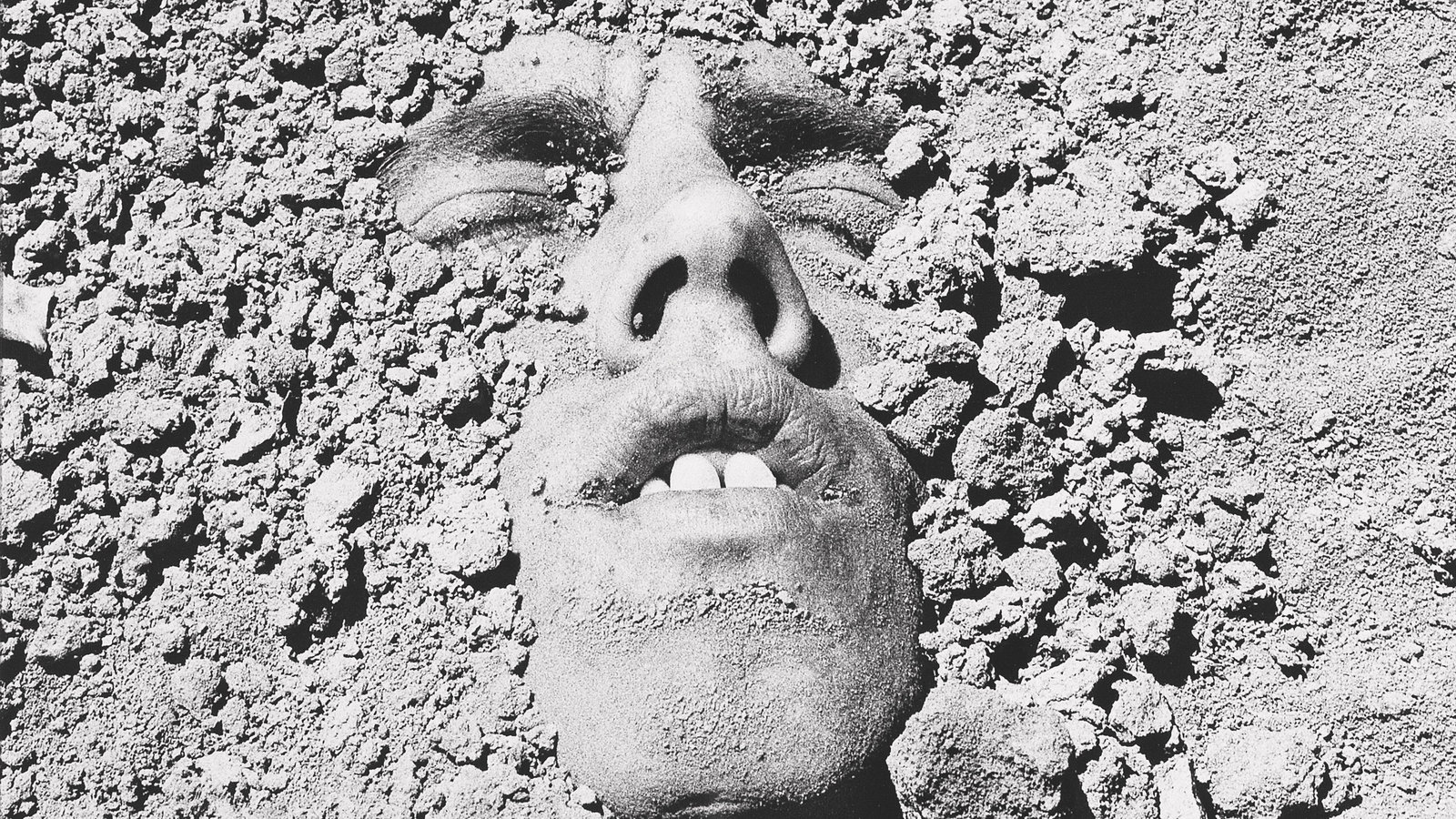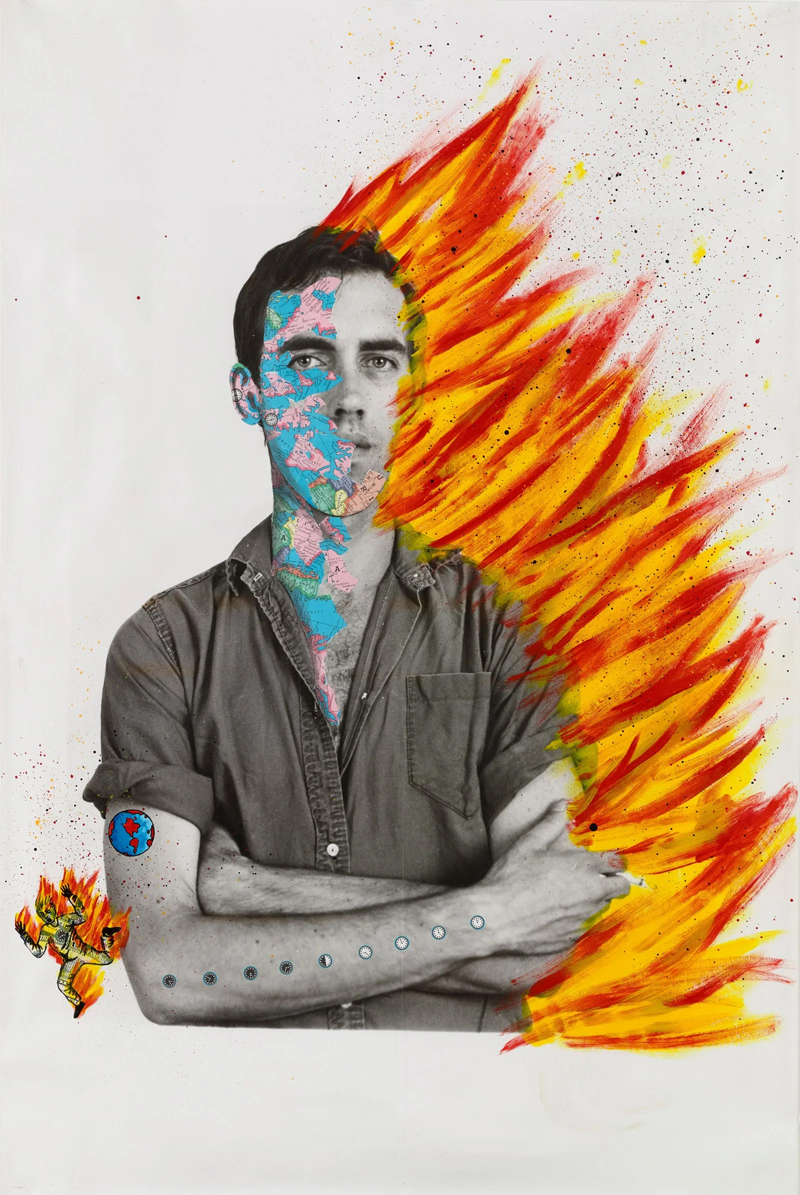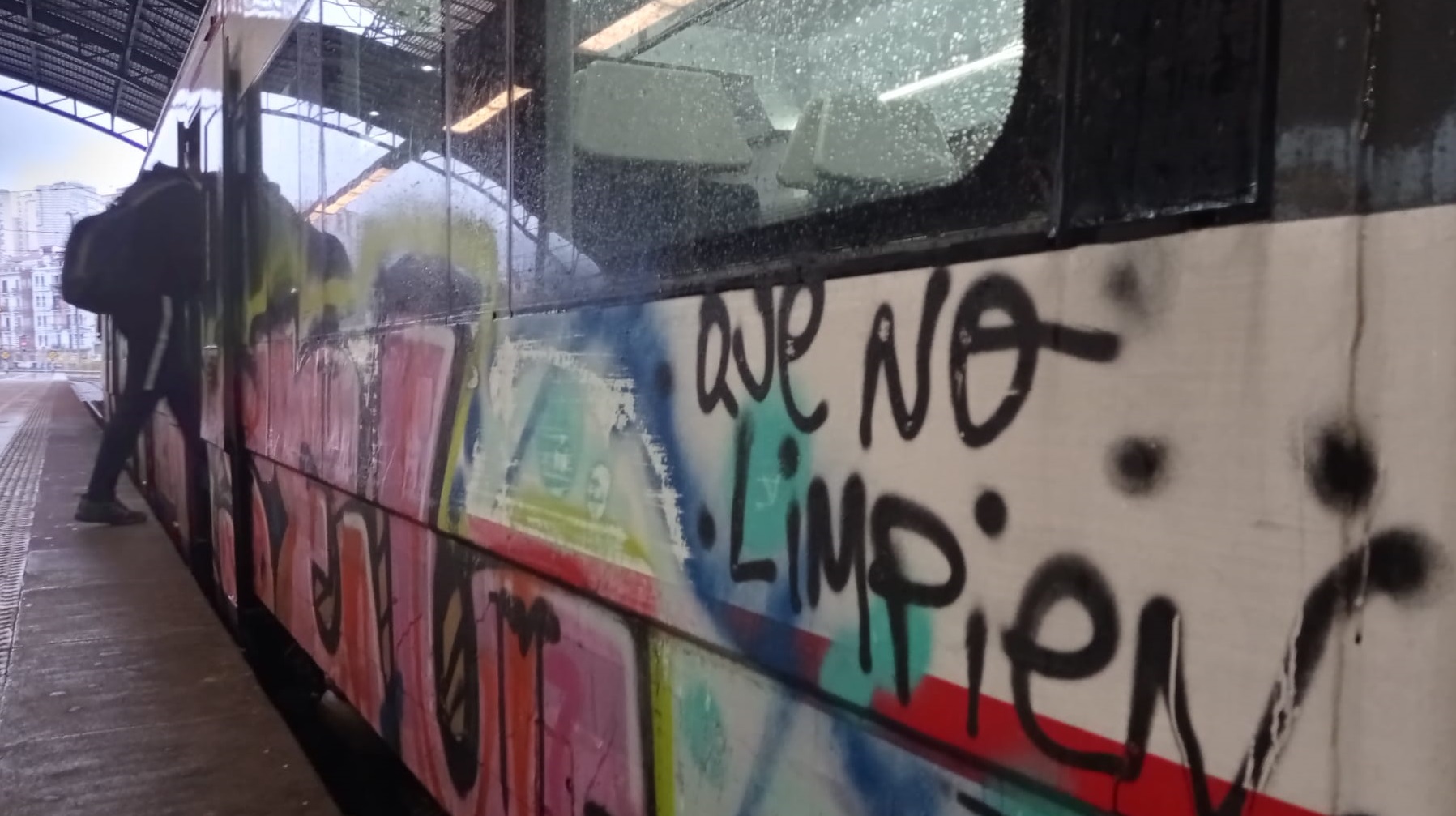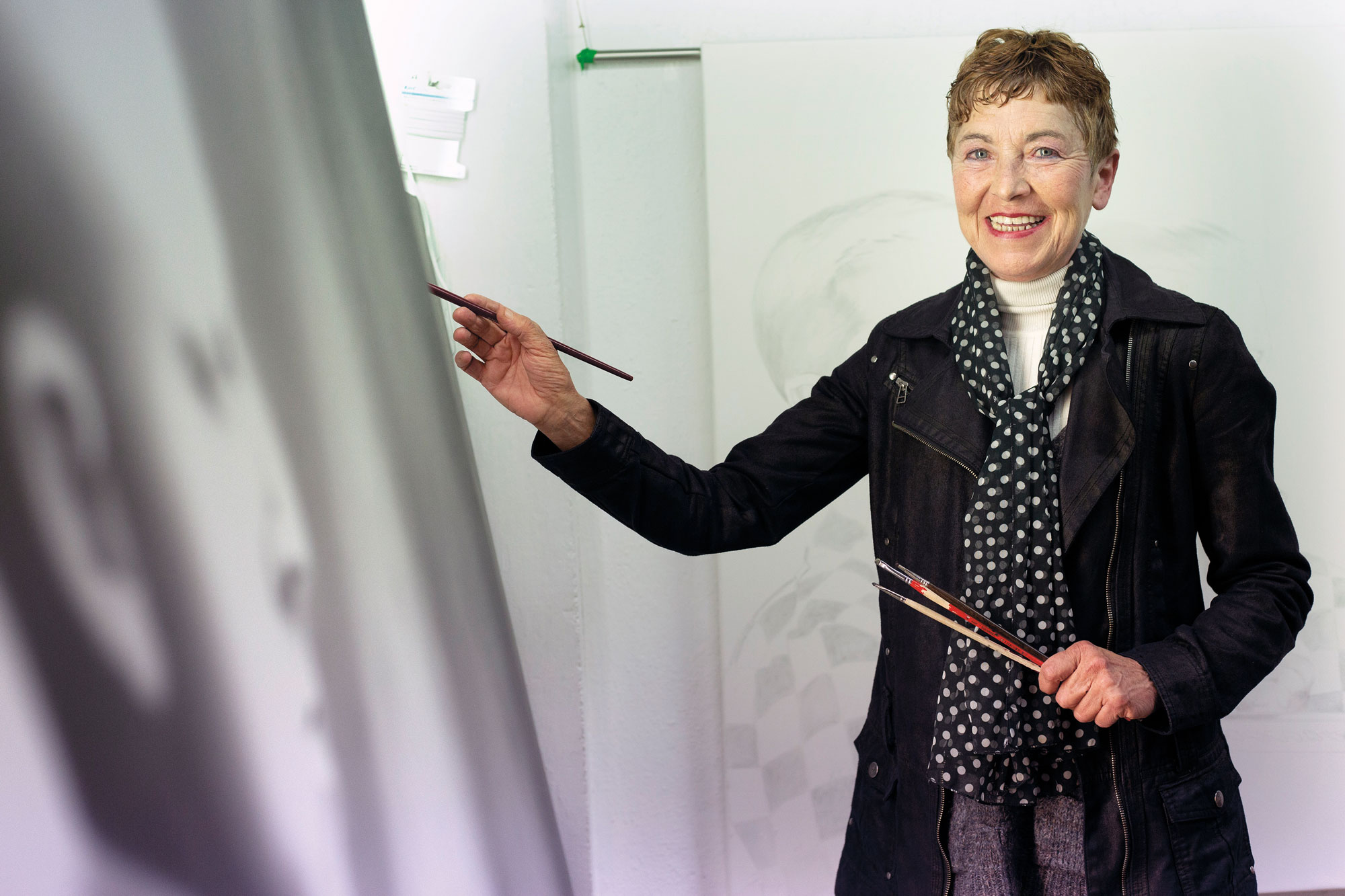Dissident artist raised under Rimbaud's costume
- American artist David Wojnarowicz (New Jersey, 1954 - New York, 1992) broke in his work the boundaries between language, resources and ways of doing, which developed in the 1980s. Multidisciplinary creator, visual artist, poet, writer, musician, photographer and filmmaker, passed away at the age of 37, buried an entire generation with AIDS.

Wojnarowicz linked a diverse artistic practice to the attitude of a committed activist, until both become inseparable. Thus, he denounced the social and political conflicts of his time through the works of art: The fight for AIDS and the military intervention of the US Government in Central America. He constantly studied and exposed both. He was one of the most prominent protagonists of the fruitful social and cultural environment flourished in the New York neighborhood of East Village, along with artists such as Peter Hujar, Mike Bidlo or Julie Hair, and in group 3 Teens Kill 4, formed in the shadow of the No Wave movement.
Wojnarowicz began her mission following the path of writing: At the age of 17, she was sent to the colonies, where she began writing for the first time a newspaper stating that the experience was very hated. He was taken as “a young man at risk of exclusion.” At that time, he lived in the foster care homes, where he spent a hard childhood, due to the violence of his father and to the rush. He was looking for male customers through their moulds and wet carcavs of the city, even though it had not come out of the closet at the time. He graduated at the age of 19 and also got to know the work of the writers Rimbaud, Kerouac, Genet and Burroughs, who often featured in their paintings, photographs and collagos, such as the well-known photographic series Arthur Rimbaud in New York, in which David's friends come together with a mask from the French symbolist poet, or masturbating drugs.

The passion for literature and writing is manifested in all of his work, both through the images of the writers who wanted him and through the insertion of the texts. He wrote and published poems, and he never stopped writing newspapers. From the time he visited the coastal camp of the State of Maine and until he was about to die, he put on paper many worries and thoughts. These notebooks have recently been published by the editorial Caja Negra (Argentina) in The Shadow of the American Dream. Newspapers 1971-1991 (In the shadow of the American Dream. Newspapers 1971-1991). “(When writing the newspaper) defines what one feels,” says the artist in a written letter to his mother. The book is a good excuse to immerse oneself in the identity, the work and the non-conformist and marginal life of the creator.
1971
Young David wrote his first diary with maps and plans in a summer camp organized by the Outward Bound School. He loved frogs, snakes and other small animals, an fauna that would appear more than once in his work, including Earth, Wind, Fire and Water (Earth, Wind, Fire and Water) of 1986. But he despised the conditions and physical effort that nature entails. He soon discovered the city void. “I would love to be able to walk through those streets where there are plastic burgers, salty cookies and crafts. In these places, sometimes, it's darker day than night. Be able to attend and come voluntarily. An undelimited island.”
1976
Together with his high school friend John Hall, he traveled to California by hitchhiking and entering freight trains. But the adventure seemed too hard for him. Along the way he found several marginal characters who gathered their stories, “monologues”, in pleadings; these interviews with truckers, sex workers, workers, vagabond and drug addicts were published in 1982 under the title Sounds in the distance.
When he came back to New York, he came out of the closet. That same year, Father Ed of David committed suicide. Over the next twelve months, he met writers and artists, started taking drugs and immersed himself in gay clubs and hostels in Downtown Manhattan.
1978
He went to Paris to visit his sister Pat. He met and fell in love with Jean Pierre Delage. He wrote a lot during his stay in France. As a result, he started working in his own literary style.
1979
In June he returned to New York. The ephemeral sexual encounters between Gay made him the regular visitor to the docks on the Hudson River. Thus, in daily writings of the time, sexual experiences prevail in the port environment.

At the same time, he had several provisional works, and in one of them he learned to reveal the photos and use the copier. He managed to photocopy the cover of Rimbaud’s Illuminations to use it as a mask in the Arthur Rimbaud in New York photographic series. He also pasted on the cover of one of the newspapers a drawing that has become a symbol of his work: a burning house, made with the technique of templates that the urban artist Banksy was going to make known in the future.
1984
He wrote little between 1980 and 1987, as his artistic activity received great recognition. Therefore, he started exhibitions in New York and in Europe. In 1987, however, there was an experience that would revolutionize his life: he met six years earlier Peter Hujar, a photographer and his partner died of AIDS. On the day of death, David asked colleagues who were in the hospital room to leave the room to pick up with the Super 8 camera that crucial moment of his lover. He also made 23 photographs of Hujar's heads, hands and feet. “Maybe I don’t recognize her death and I accept her by putting the camera in my hands and sweeping into her bed,” she wrote in a 1987 newspaper. He did very few photographs and kept the negative ones in an envelope. In the envelope that says: “23 photos of Peter, 23 genes on a chromosome, 1423 rooms.” The number of chromosomal pairs of each human cell has frequently appeared in the work of Wojnarowicz, as in Metamorphosis (Metamorphosis), composed of 23 plaster heads, performed in 1984.
1988
He moved to Hujar's loft. In the spring she did the AIDS test and tested positive. Finally, he died on 22 July 1992 as a result of the illness. “Sometimes I hate people. I'm sick of feeling like a blurry photocopy of what I was. The past year's self disappeared, it's completely lost in the past, floating like a piece of cloth. I am empty, I am a copy of my characteristics,” he wrote on 1 August 1991.
2019
The work of David Wojnarowicz is constantly being reviewed in recent years with a retrospective exhibition of the History Keeps Ma Awake At Night opened in 2018, which took place at the Museo de Arte Reina Sofía in Madrid in 2019. The catalogue published in connection with this presentation was essential for the drafting of this text. A spectacular publication that delves into the work and trajectory of a creator who reinvented art, activism and sexual dissent.
Eskultura grekoerromatarrek bere garaian zuten itxurak ez du zerikusirik gaurkoarekin. Erabilitako materiala ez zuten bistan uzten. Orain badakigu kolore biziz margotzen zituztela eta jantziak eta apaingarriak ere eransten zizkietela. Bada, Cecilie Brøns Harvard... [+]
Behin batean, gazterik, gidoi nagusia betetzea egokitu zitzaion. Elbira Zipitriaren ikasle izanak, ikastolen mugimendu berriarekin bat egin zuen. Irakasle izan zen artisau baino lehen. Gero, eskulturgile. Egun, musika jotzen du, bere gogoz eta bere buruarentzat. Eta beti, eta 35... [+]
This text comes two years later, but the calamities of drunks are like this. A surprising surprise happened in San Fermín Txikito: I met Maite Ciganda Azcarate, an art restorer and friend of a friend. That night he told me that he had been arranging two figures that could be... [+]
On Monday afternoon, I had already planned two documentaries carried out in the Basque Country. I am not particularly fond of documentaries, but Zinemaldia is often a good opportunity to set aside habits and traditions. I decided on the Pello Gutierrez Peñalba Replica a week... [+]
























